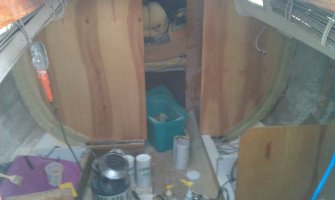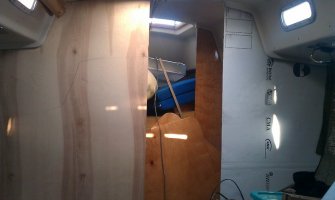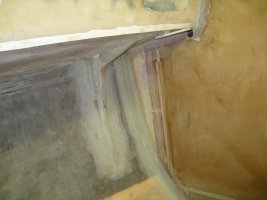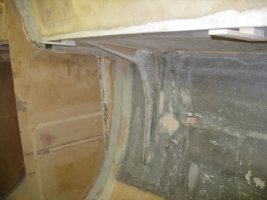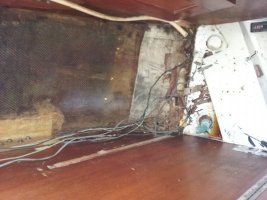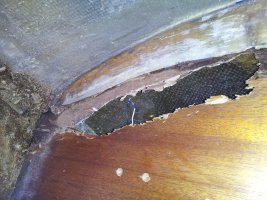Thanks for the advice
I was just getting ready to message you guys about my upcoming projects. Here's the list and the first update. Maybe I should start a new thread....
Replaced leaking fuel tank with a moeller plastic tank. As soon as I put gas in the original tank to run the engine off the installed tank, it started dripping from the bottom.

Resealed 1 window with Butyl tape after cleaning out the grey goop.
Hauled it and had a "post-purchase" survey done. Yeah, I know......
Put a coat of micron extra bottom paint on to get through the "rebuilding" phase.
I've repaired soft spots and rebedded deck hardware on a 23' before, but not looking forward to the scale on this one.
The surveyor pointed out that the bulkhead/chainplate repair wasn't done properly, so I'll be utilizing info from Tender's repair to replace at least half of the bulkhead.

Given enough time, I'll be doing almost all of these projects myself.
I will ask lots of questions and seek advice from anyone willing to give it.
Here's my plan of action:
Winter: Seal windows and deck hardware, remove trim from around bulkhead, remove affected chainplates, cut away 1/2 of port bulkhead, fashion replacement half-bulkhead, also cut out small section of starboard bulkhead and repair.
Spring: Install replacement half-bulkhead with lots of fiberglass tabbing and securing it to existing bulkhead, replace chainplates.
Summer: sail with soft decks
Next year: replace coring material in soft spots on deck. look into engine mount problems.
Questions:
Tender, How is your "small" chainplate bulkhead repair holding up (where you replaced the rotted wood with the horizontal section (maybe 4"X12"))?
Also, how is the larger 1/2 bulkhead repair holding up?
Is there a way to drill holes in the interior headliner to allow the soft spots to breath? Maybe help keep the rot from spreading?
Thanks for the help! This is a bit larger of a project than I anticipated, and yes, I jumped in a little too aggressively, but how else would I ever learn how to replace a bulkhead, right?


